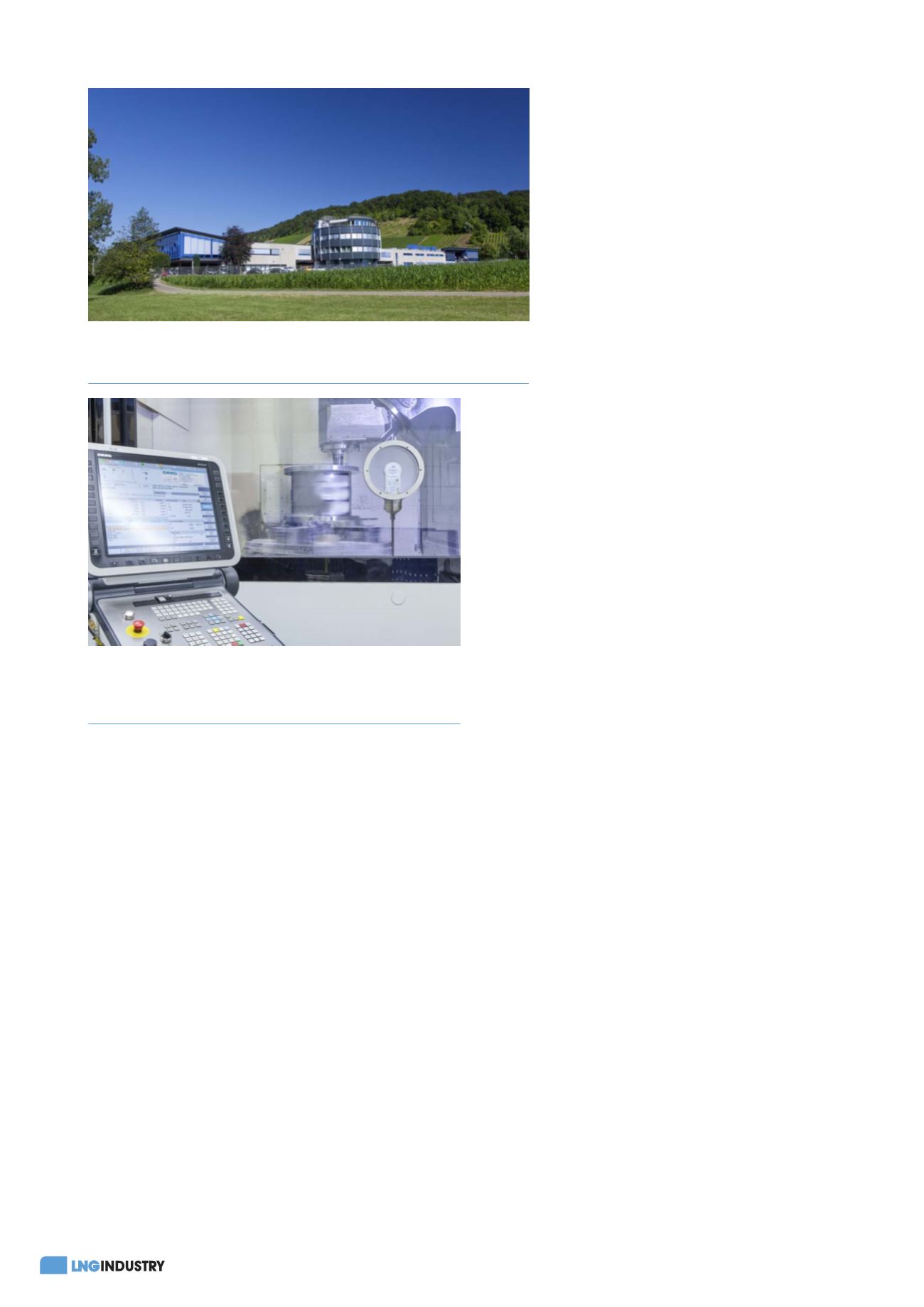
24
April 2020
technology and a regasification process, again where the
opportunity for excessive leakage exists and prohibits the
safe and economical applications. Whenever the need for
the product wanes or loss of the product leads to
increased costs, LNG operators are looking for answers in
new technology to prevent that from happening.
Extreme process conditions
At LNG terminals, the imported LNG is unloaded from gas
tankers at special berthing facilities and stored in large
LNG storage tanks. In order to achieve the liquefaction of
the gas and maintain it in a liquid state, the pipelines and
the storage tanks must withstand a temperature of -162°C
(-260°F). Conversely, before delivering to the transmission
network in an ambient temperature as a gas, the LNG
will then be smoothly warmed up and evaporated. The
temperature swings in this process can be extreme on
piping systems, particularly sealing mechanisms, including
valves.
Applications in low temperature ranges are becoming
more important in this era of energy transition, with the
growth of LNG facilities growing globally. Due to the
increased storage and further recycling of LNG, the
demand for plants in cryogenic areas has significantly
increased in recent years. To enable cost-effective
transport, the gas is cooled and reheated, causing the
ability to achieve a high degree of leak
tightness to be problematic. Many
manufacturers of triple offset butterfly valves
(an ideal overall design for the required piping
systems because of space and weight
requirements) have problems maintaining an
acceptable leakage rate per BS 6364 due to
the geometry of their sealing being an
elliptical shape and therefore hard to create a
solid seal, which is attributable to the
geometry. Utilising new technology and adding
a fourth offset creates a fully round sealing
mechanism; the disc/seat configuration can be
more uniform, and a tighter, more reliable seal
is achieved.
When a leader in valve technology went
looking for a severe service product to
enhance its growing portfolio of valve products, it created
a solution that it is just beginning to realise will be much
bigger than originally intended, primarily due to the fact
that the world’s IOCs are looking for better and safer
technology. The Müller Co-Ax Group is a global
manufacturer of valve technology for the most demanding
customers in various markets. With the founding of the
QUADAX® butterfly valves division a little over 10 years
ago, the group of companies entered the field of butterfly
valves being used in the most extreme conditions. The
new design utilising innovative four offset technology
provided a product designed to meet extreme pressure
and temperature ranges, which made it particularly
suitable for low-temperature applications, such as LNG
and cryogenic piping systems.
In response to the demand for valves in these extreme
applications with safer and more reliable operation,
QUADAX butterfly valves provide an excellent solution,
recently outperforming expectations in severe thermal
cycle tests combined with endurance tests. These tests
were originally created by a major operator to ensure that
the valves in its system performed as advertised, while
providing long-term reliability. The valves passed the tests
with no issues or concerns.
Testing for reliability
During storage and transportation, natural gas could leak
into the atmosphere, especially from critical components
like measuring devices and process valves. Besides the
negative environmental effects, these fugitive emissions
could also have an impact on security. The operating
company of an LNG terminal is therefore paying much
attention to this fact, and requested an individual
performance test for the approval of cryogenic valves to
be installed in its terminals and storage tanks. For this
purpose, the cryogenic test according to BS 6364 was
combined with an endurance test according to EN 12567.
The QUADAX four offset butterfly valve DN 500 mm
(20 in.), ANSI class 150, has been tested at the ITIS test
laboratory in the Netherlands, specifying 10 thermal
cycles with a fugitive emission test at alternating
temperatures of 20°C (68°F) and -196°C (-320°F). In
addition to this, the requirement called for an endurance
test, with 500 mechanical switches at -196°C measuring
the internal and external leakage after determined
Figure 1.
Müller Co-Ax’s corporate location is in the heart of Germany,
home to world class engineering and technology.
Figure 2.
Quadax production facility which includes high
tech machine centers and ‘best in class’ manufacturing
capabilities.








